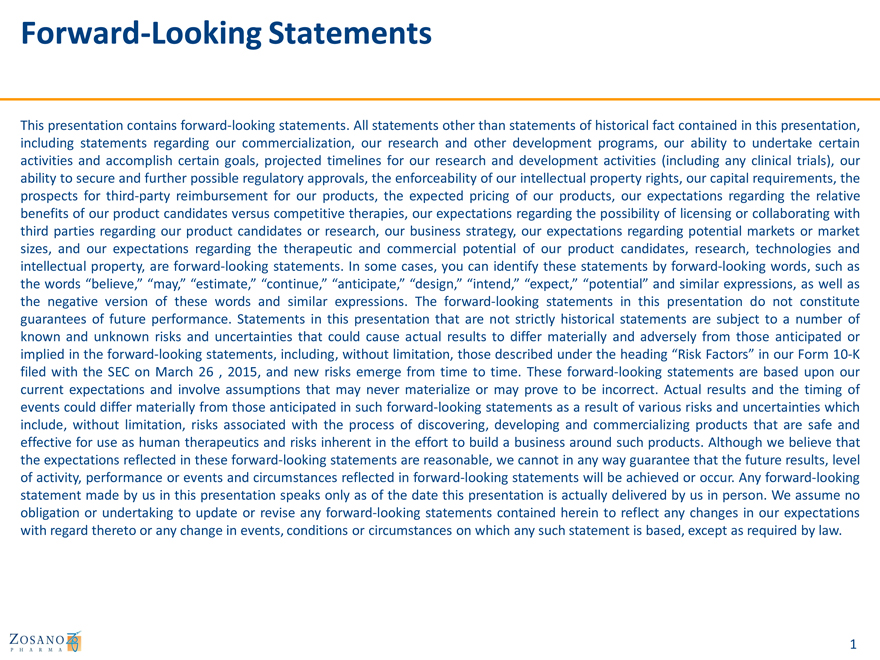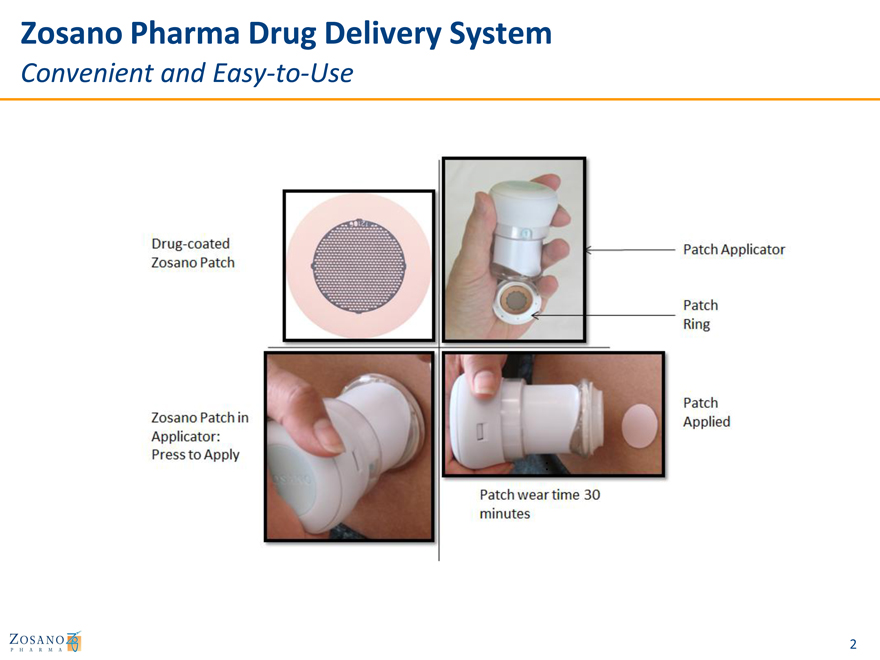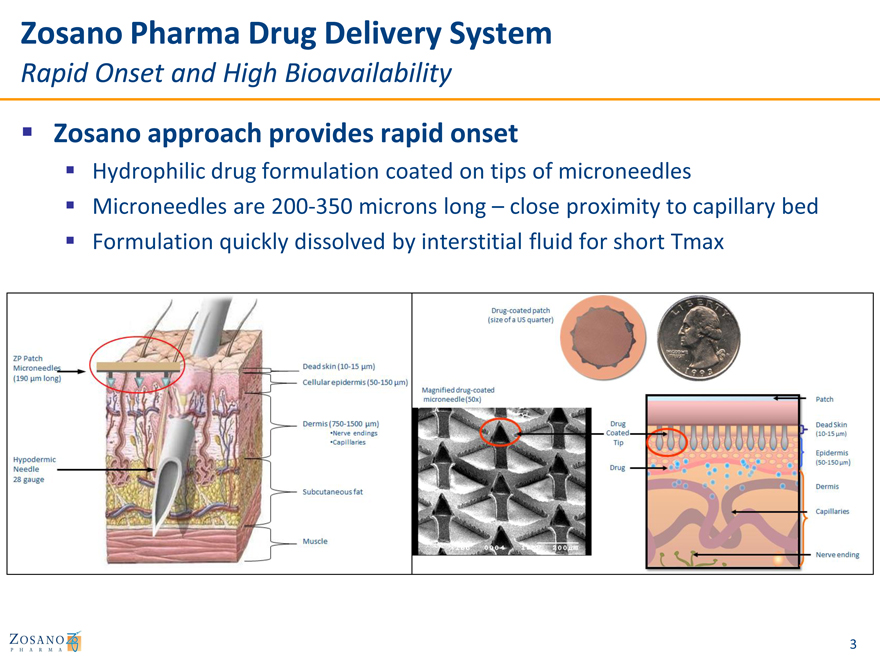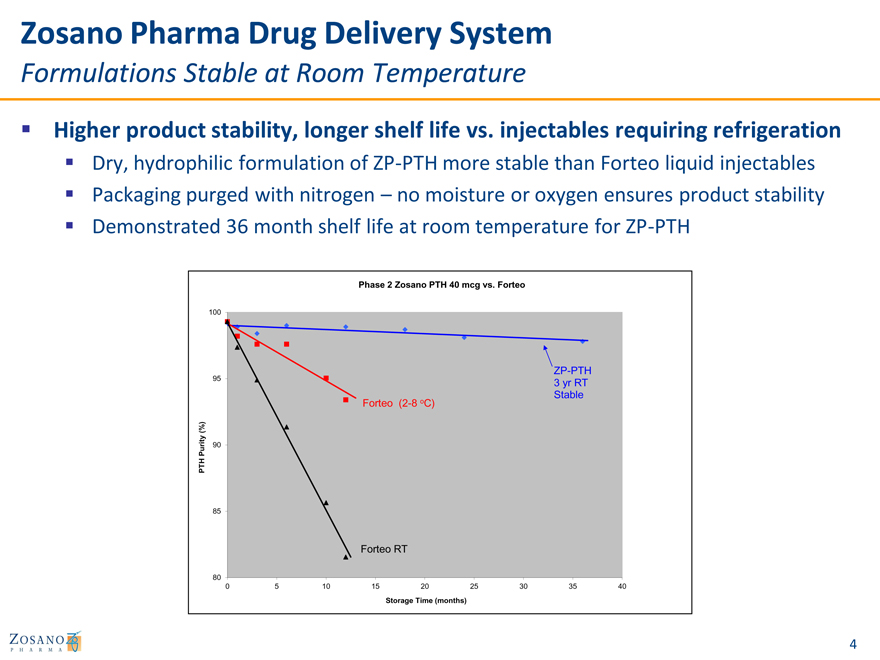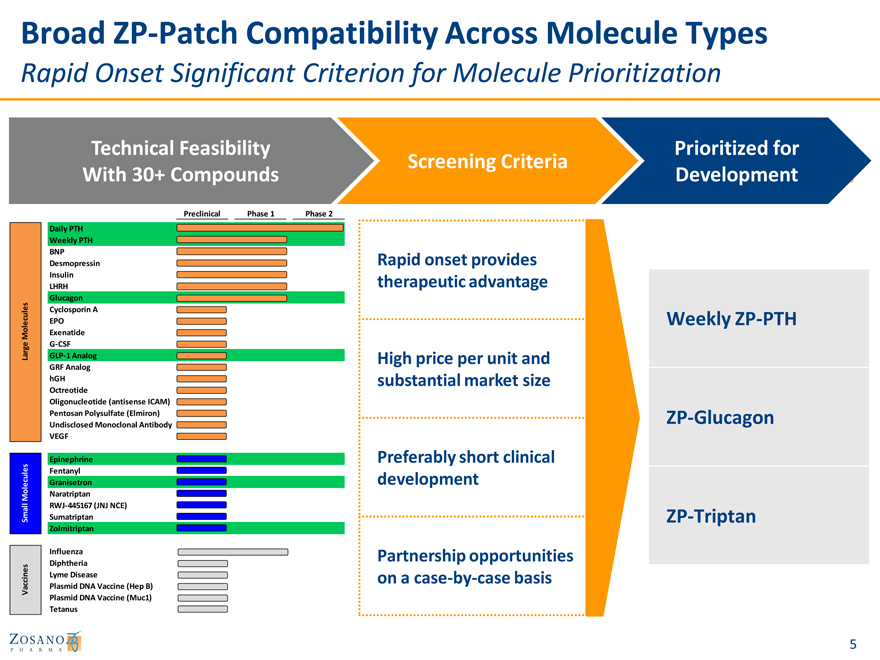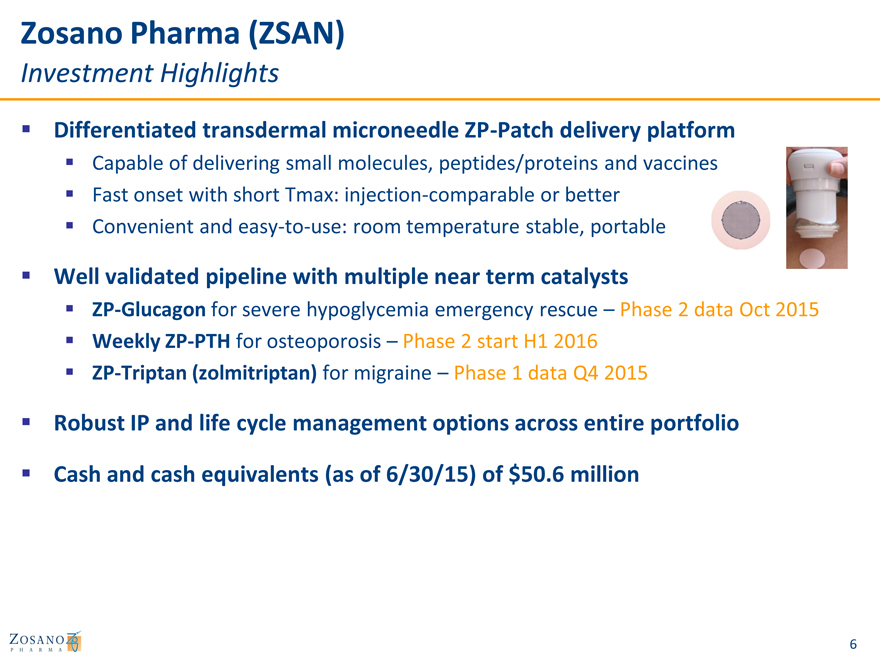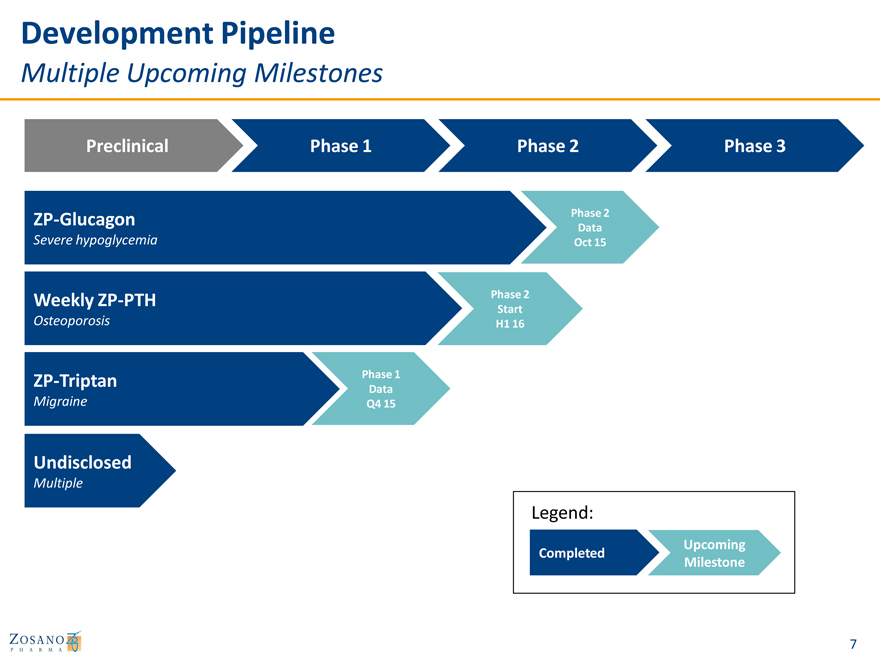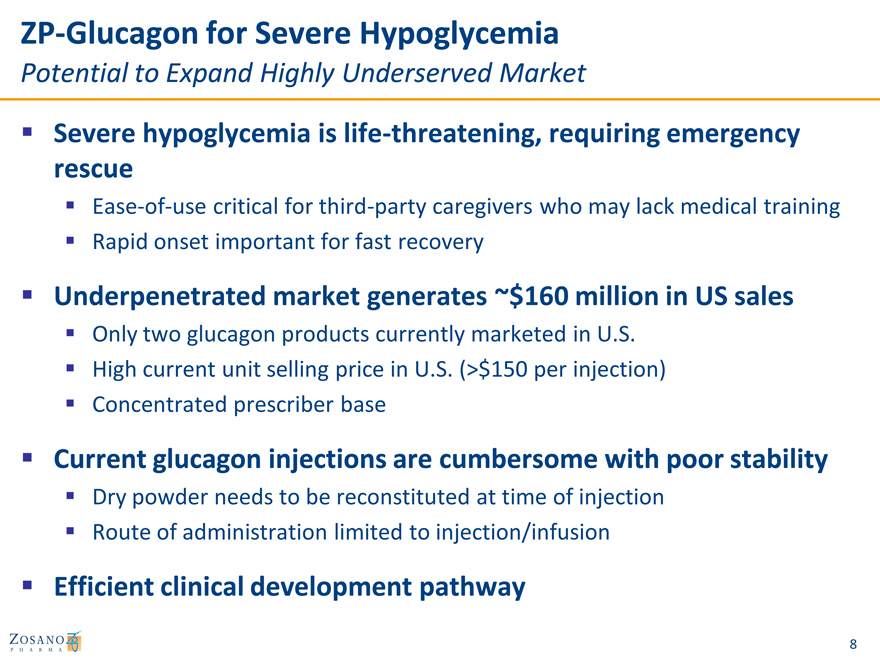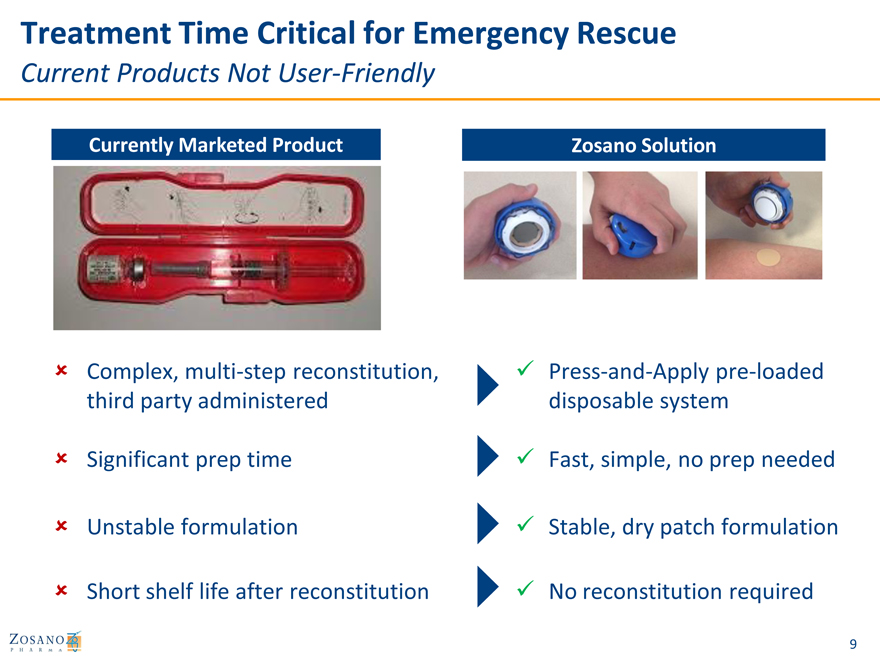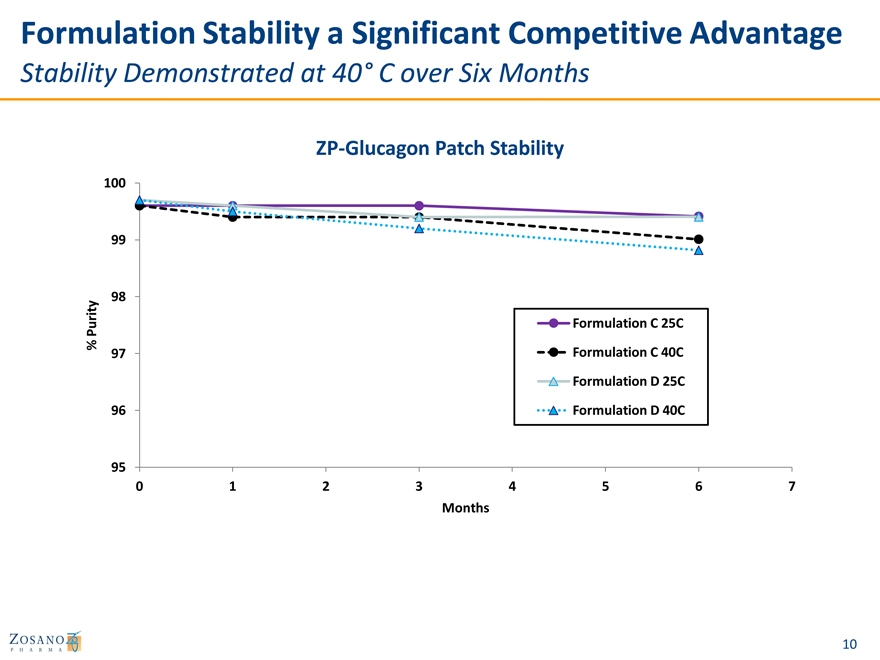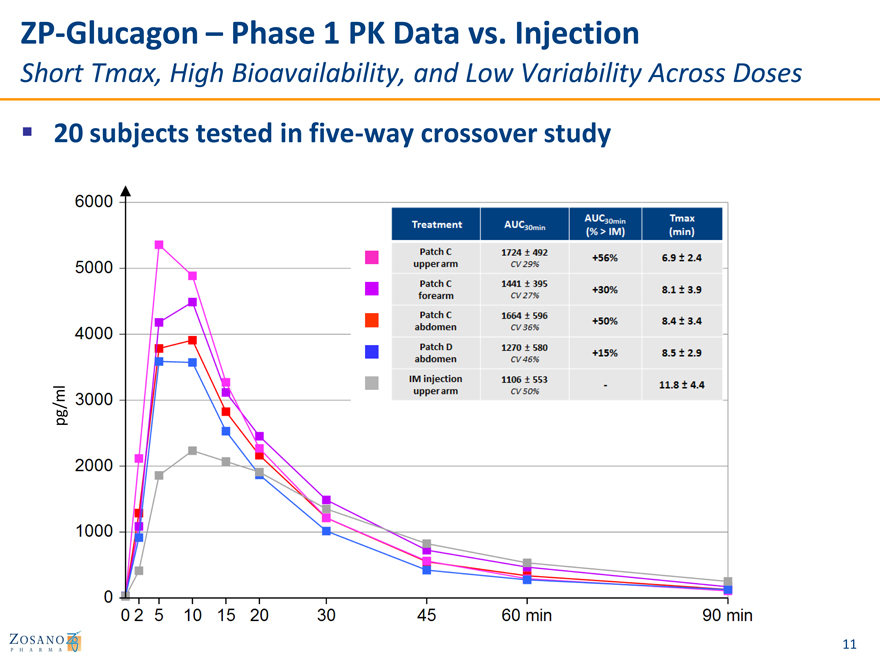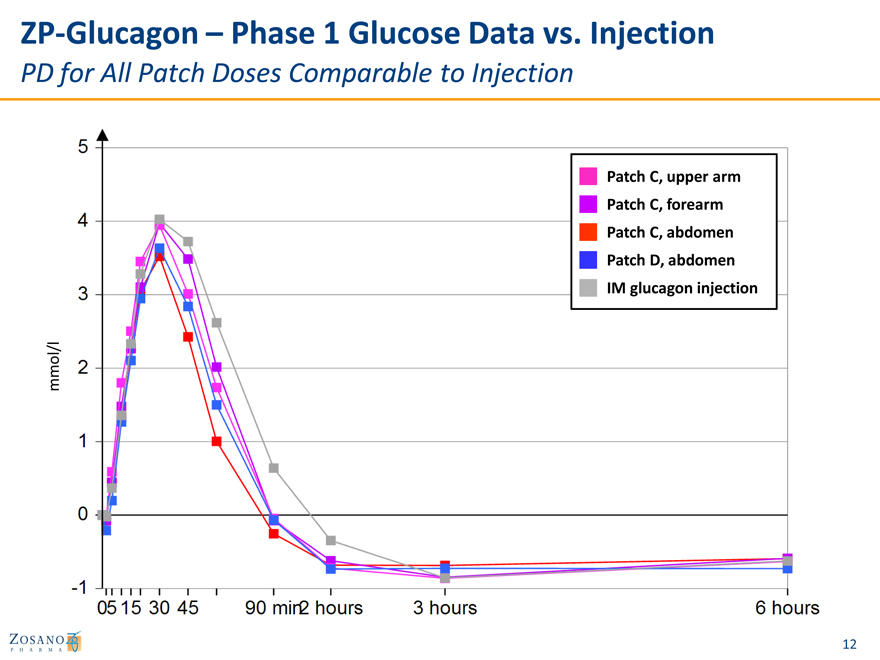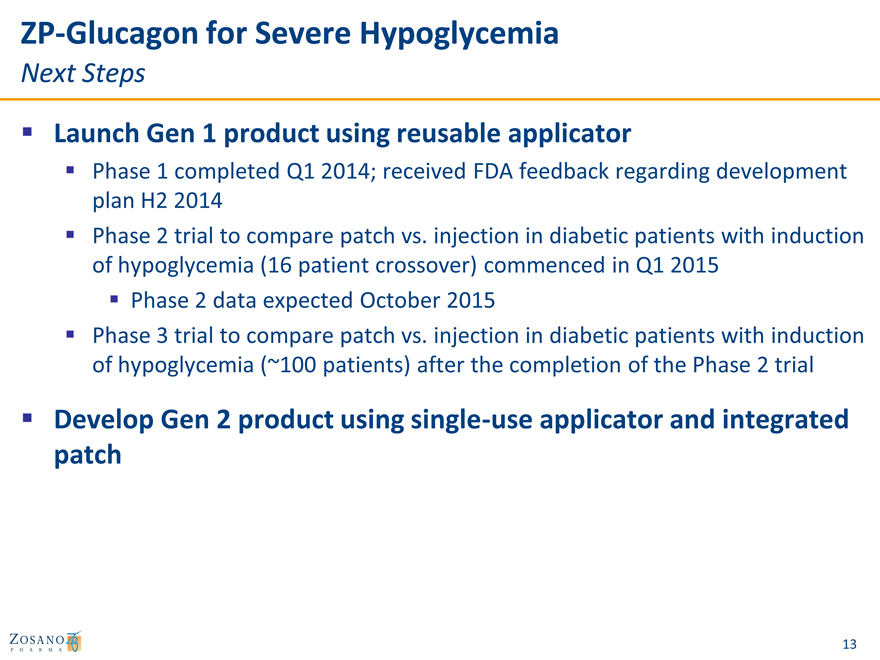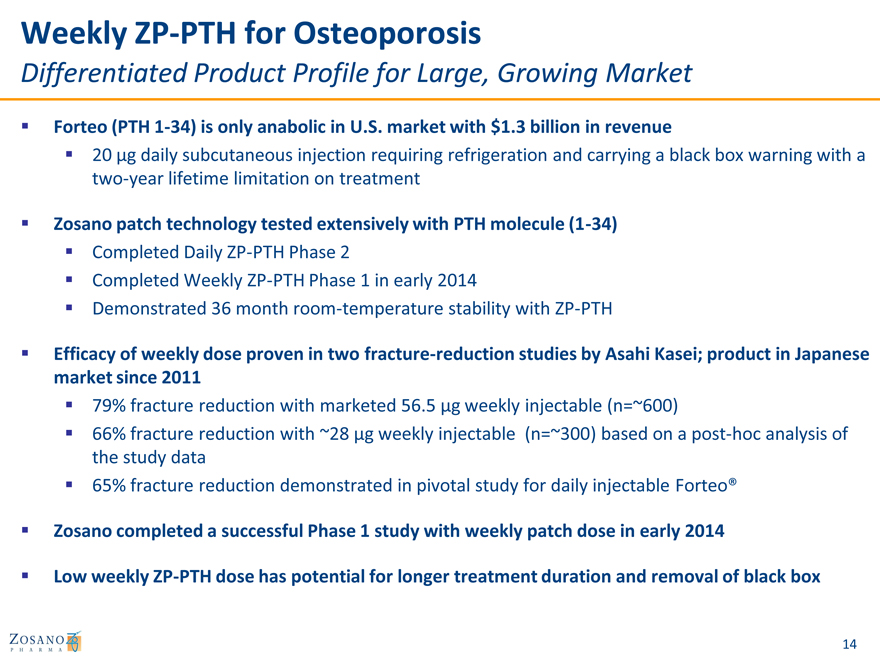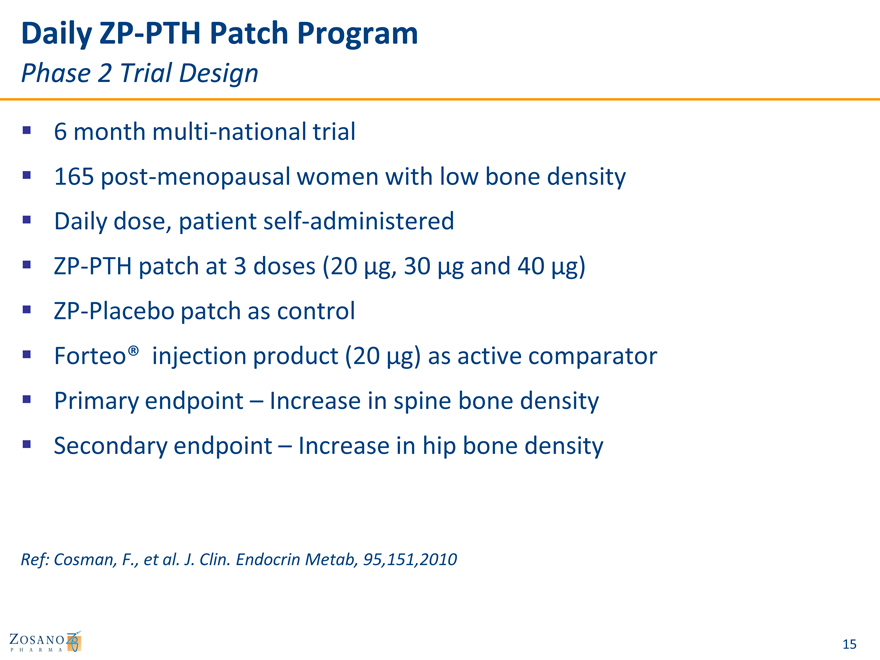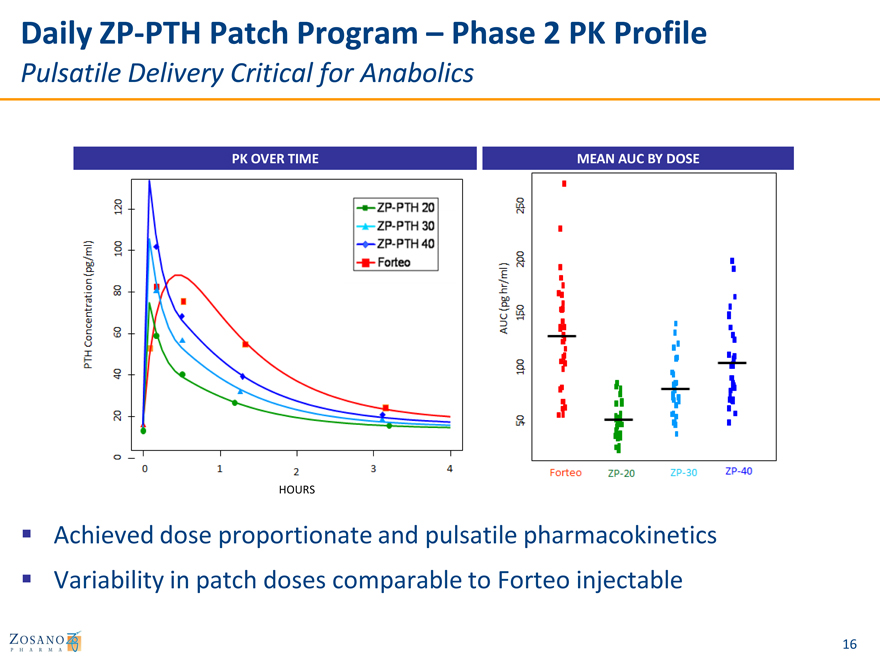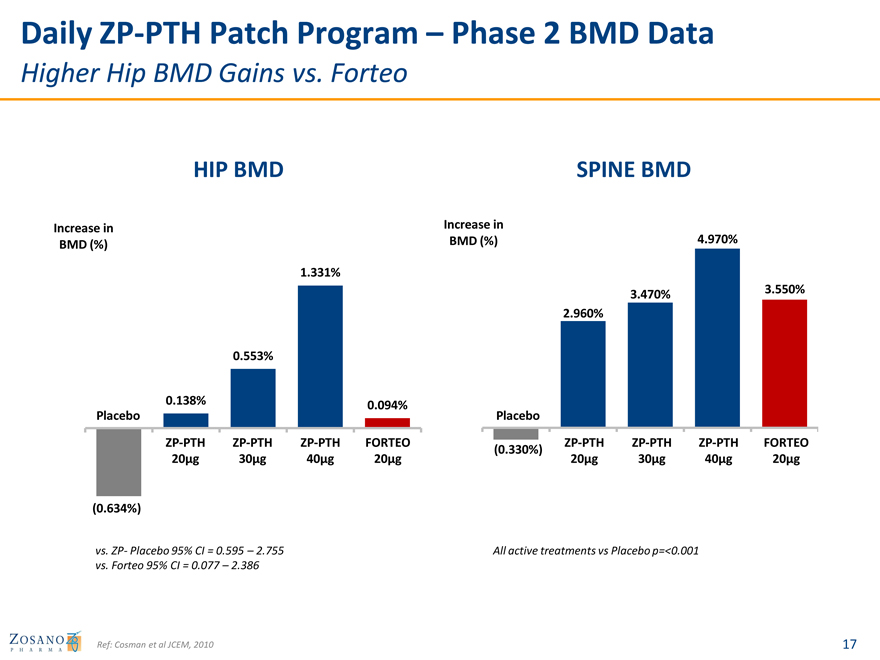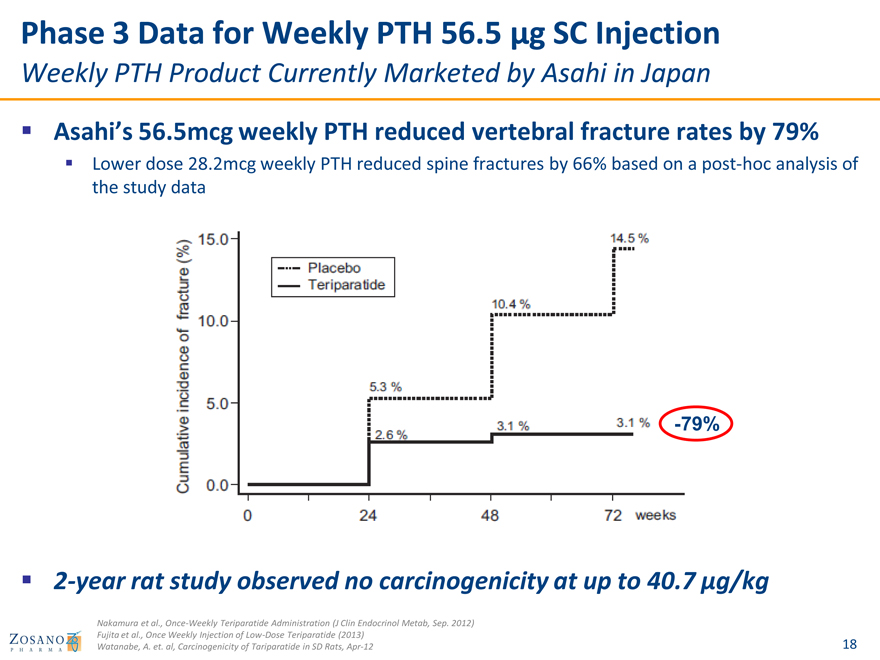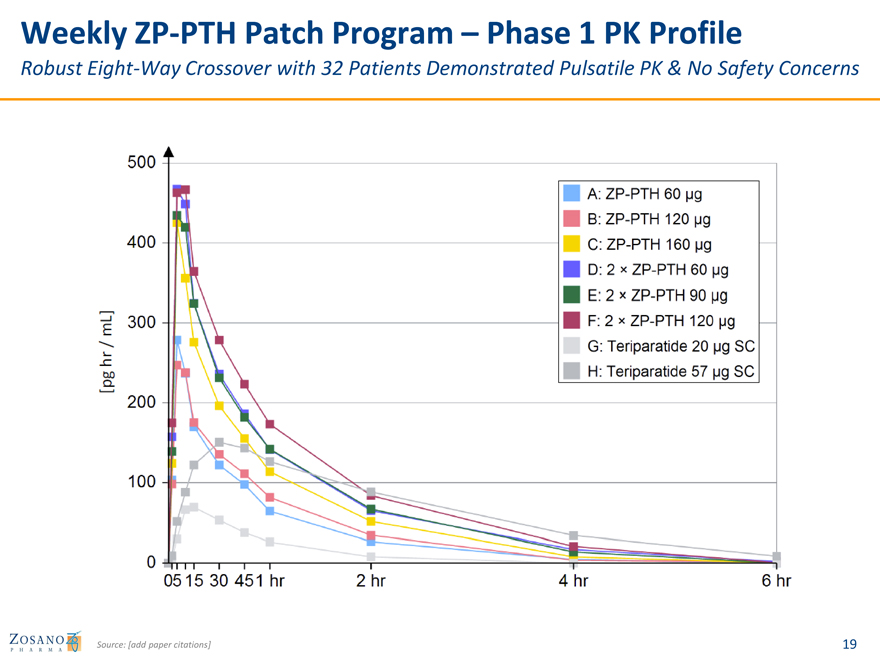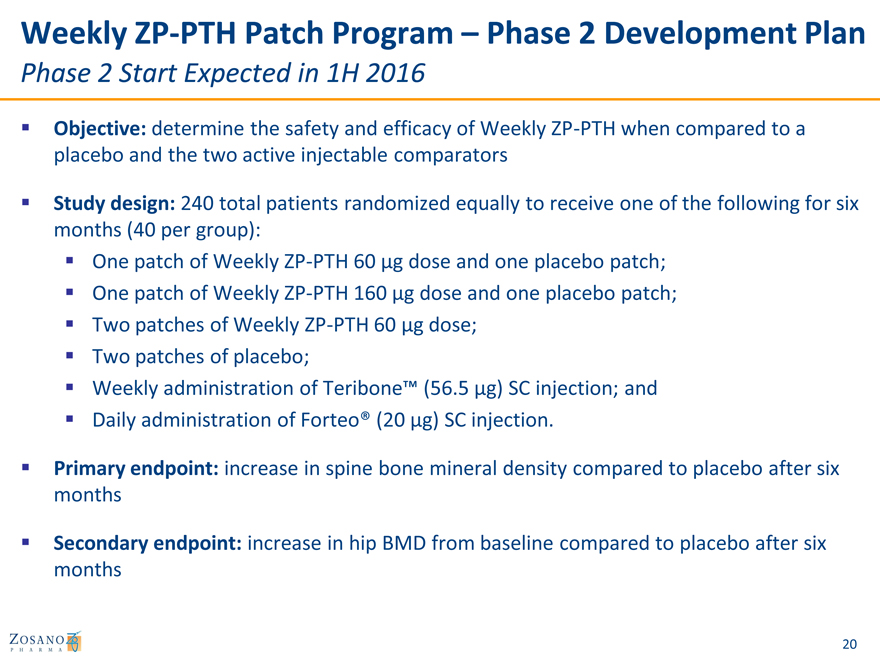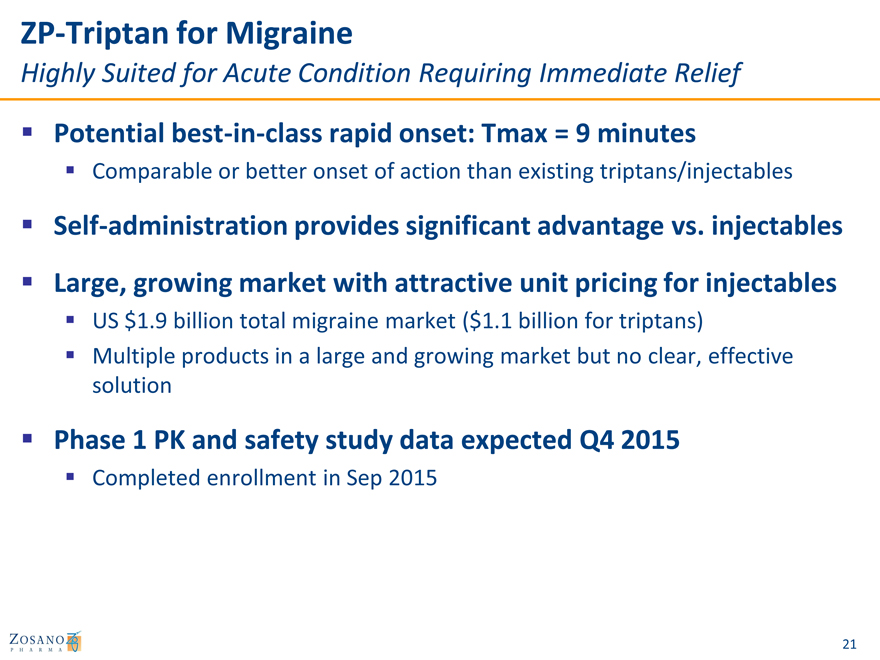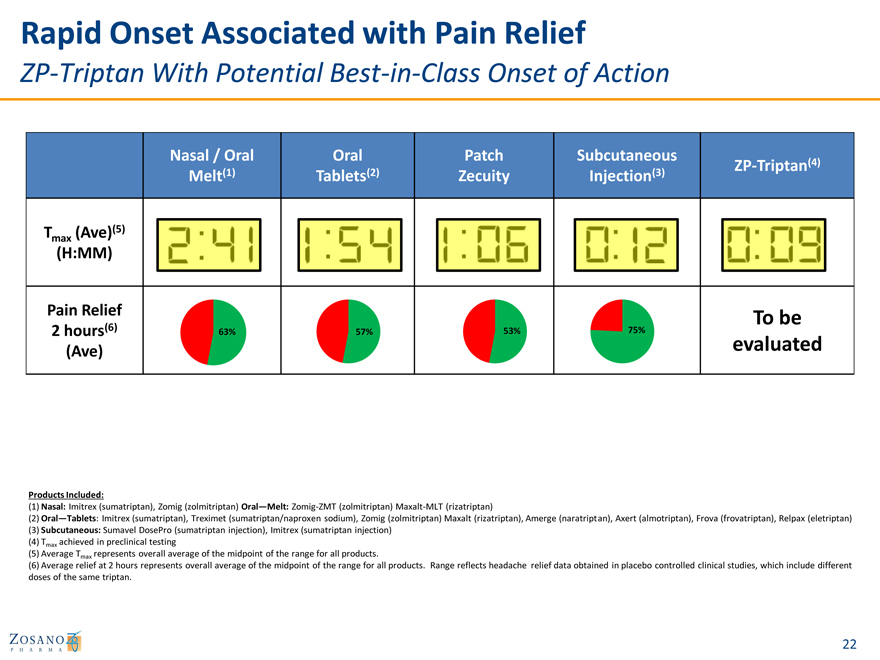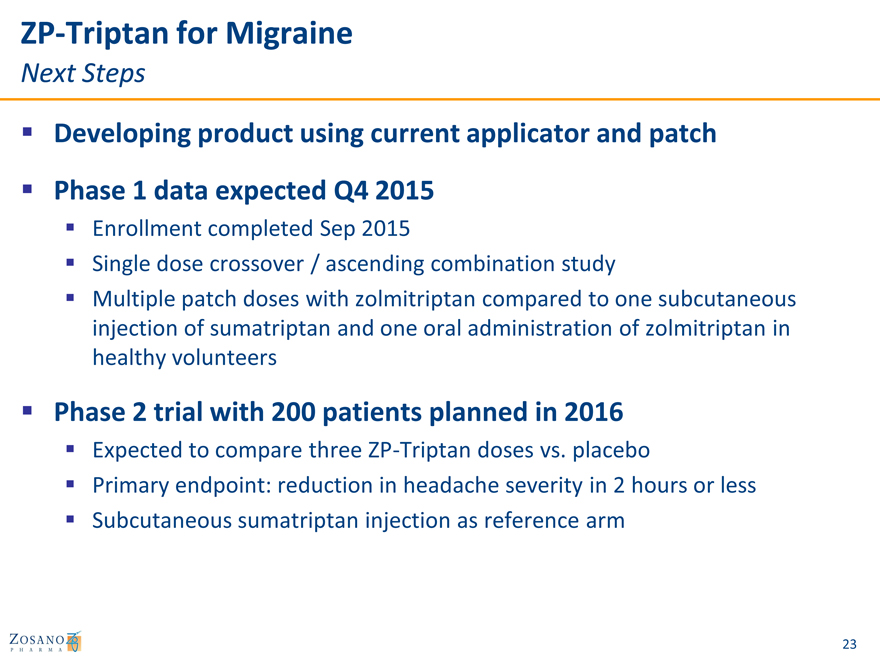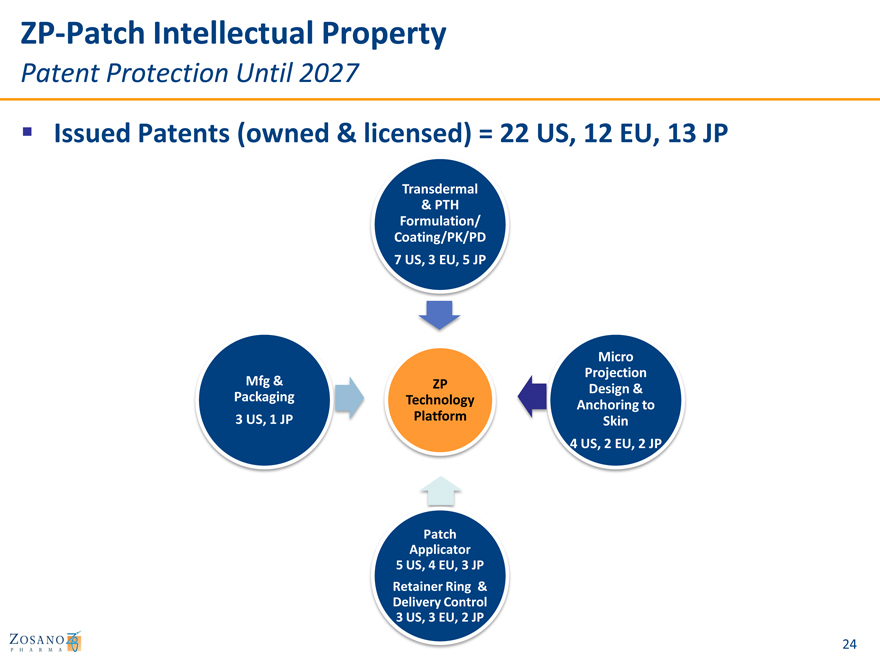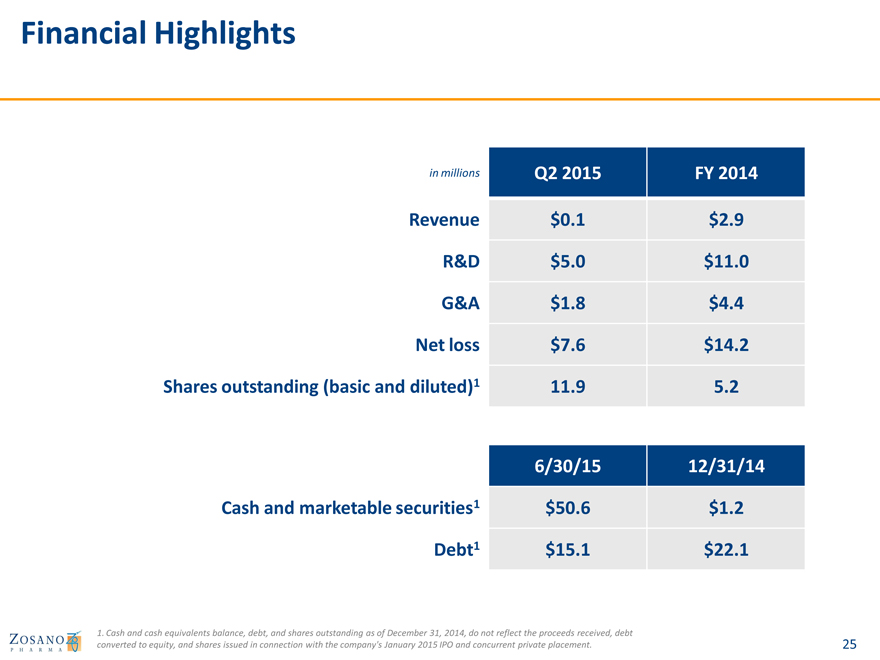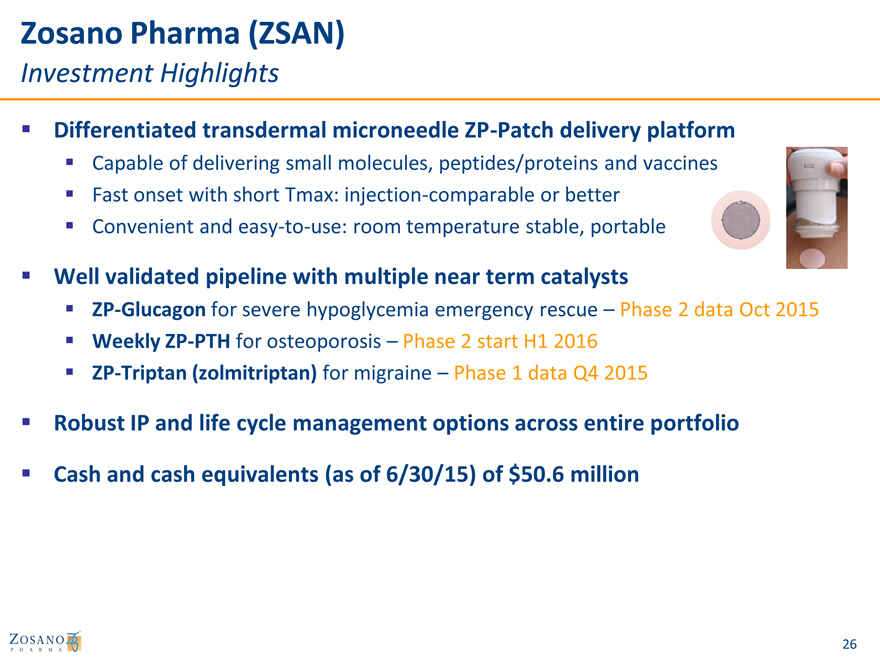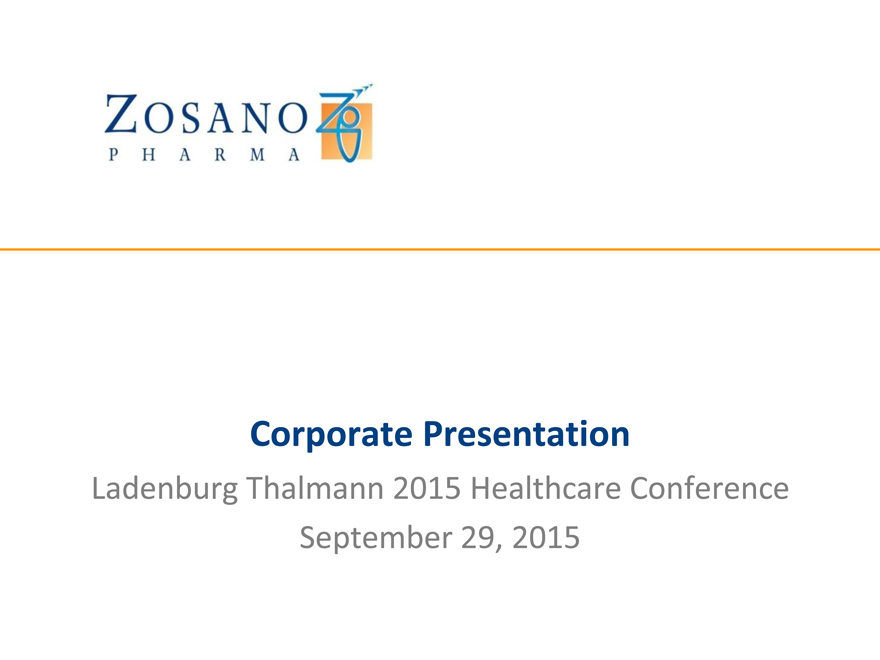|
Exhibit 99.1 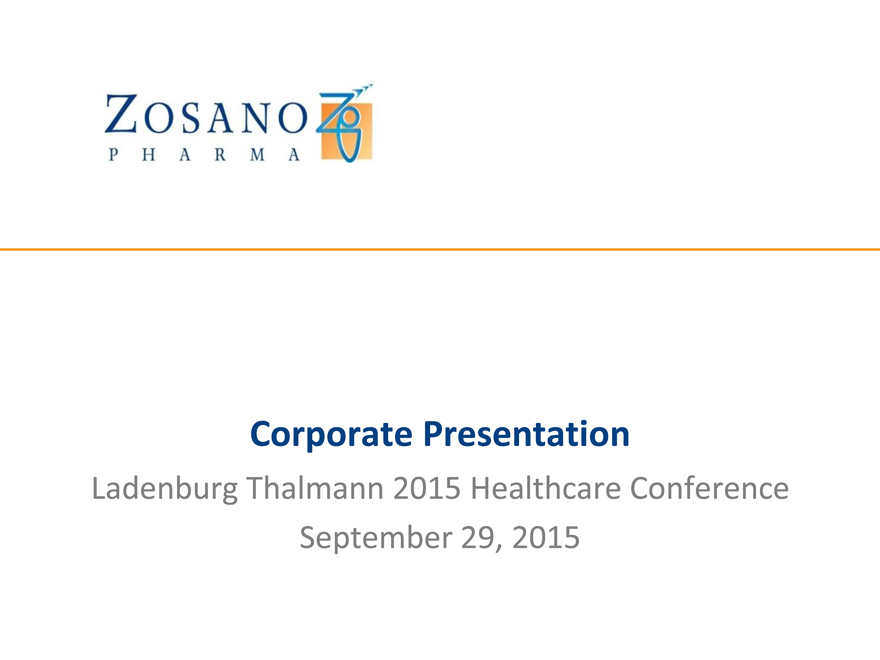
|
Exhibit 99.1
Corporate Presentation
Ladenburg Thalmann 2015 Healthcare Conference September 29, 2015
Forward-Looking Statements
This presentation contains forward-looking statements. All statements other than statements of historical fact contained in this presentation, including statements regarding our commercialization, our research and other development programs, our ability to undertake certain activities and accomplish certain goals, projected timelines for our research and development activities (including any clinical trials), our ability to secure and further possible regulatory approvals, the enforceability of our intellectual property rights, our capital requirements, the prospects for third-party reimbursement for our products, the expected pricing of our products, our expectations regarding the relative benefits of our product candidates versus competitive therapies, our expectations regarding the possibility of licensing or collaborating with third parties regarding our product candidates or research, our business strategy, our expectations regarding potential markets or market sizes, and our expectations regarding the therapeutic and commercial potential of our product candidates, research, technologies and intellectual property, are forward-looking statements. In some cases, you can identify these statements by forward-looking words, such as the words “believe,” “may,” “estimate,” “continue,” “anticipate,” “design,” “intend,” “expect,” “potential” and similar expressions, as well as the negative version of these words and similar expressions. The forward-looking statements in this presentation do not constitute guarantees of future performance. Statements in this presentation that are not strictly historical statements are subject to a number of known and unknown risks and uncertainties that could cause actual results to differ materially and adversely from those anticipated or implied in the forward-looking statements, including, without limitation, those described under the heading “Risk Factors” in our Form 10-K filed with the SEC on March 26 , 2015, and new risks emerge from time to time. These forward-looking statements are based upon our current expectations and involve assumptions that may never materialize or may prove to be incorrect. Actual results and the timing of events could differ materially from those anticipated in such forward-looking statements as a result of various risks and uncertainties which include, without limitation, risks associated with the process of discovering, developing and commercializing products that are safe and effective for use as human therapeutics and risks inherent in the effort to build a business around such products. Although we believe that the expectations reflected in these forward-looking statements are reasonable, we cannot in any way guarantee that the future results, level of activity, performance or events and circumstances reflected in forward-looking statements will be achieved or occur. Any forward-looking statement made by us in this presentation speaks only as of the date this presentation is actually delivered by us in person. We assume no obligation or undertaking to update or revise any forward-looking statements contained herein to reflect any changes in our expectations with regard thereto or any change in events, conditions or circumstances on which any such statement is based, except as required by law.
Zosano Pharma Drug Delivery System
Convenient and Easy-to-Use
Zosano Pharma Drug Delivery System
Rapid Onset and High Bioavailability
Zosano approach provides rapid onset
Hydrophilic drug formulation coated on tips of microneedles
Microneedles are 200-350 microns long – close proximity to capillary bed Formulation quickly dissolved by interstitial fluid for short Tmax
Zosano Pharma Drug Delivery System
Formulations Stable at Room Temperature
Higher product stability, longer shelf life vs. injectables requiring refrigeration
Dry, hydrophilic formulation of ZP-PTH more stable than Forteo liquid injectables
Packaging purged with nitrogen – no moisture or oxygen ensures product stability
Demonstrated 36 month shelf life at room temperature for ZP-PTH
Phase 2 Zosano PTH 40 mcg vs. Forteo
100
ZP-PTH
Stable
Forteo (2-8 oC)
(%)
rity 90
u
P
H
PT
Forteo RT
0 5 10 15 20 25 30 35 40
Storage Time (months)
Broad ZP-Patch Compatibility Across Molecule Types
Rapid Onset Significant Criterion for Molecule Prioritization
Technical Feasibility Prioritized for
Screening Criteria
With 30+ Compounds Development
Preclinical Phase 1 Phase 2
Daily PTH
Weekly PTH
BNP
Desmopressin
Insulin
LHRH
Glucagon
es Cyclosporin A
l
u
e c EPO
ol Exenatide
M
ge G-CSF
Lar GLP-1 Analog
GRF Analog
hGH
Octreotide
Oligonucleotide (antisense ICAM)
Pentosan Polysulfate (Elmiron)
Undisclosed Monoclonal Antibody
VEGF
Epinephrine
Fentanyl
ecules Granisetron
Mol Naratriptan
RWJ-445167 (JNJ NCE)
Small Sumatriptan
Zolmitriptan
Influenza
Diphtheria
Lyme Disease
Vaccines Plasmid DNA Vaccine (Hep B)
Plasmid DNA Vaccine (Muc1)
Tetanus
Rapid onset provides
therapeutic advantage
Weekly ZP-PTH
High price per unit and
substantial market size
ZP-Glucagon
Preferably short clinical
development
ZP-Triptan
Partnership opportunities
on a case-by-case basis
Zosano Pharma (ZSAN)
Investment Highlights
Differentiated transdermal microneedle ZP-Patch delivery platform
Capable of delivering small molecules, peptides/proteins and vaccines
Fast onset with short Tmax: injection-comparable or better
Convenient and easy-to-use: room temperature stable, portable
Well validated pipeline with multiple near term catalysts
ZP-Glucagon for severe hypoglycemia emergency rescue – Phase 2 data Oct 2015
Weekly ZP-PTH for osteoporosis – Phase 2 start H1 2016
ZP-Triptan (zolmitriptan) for migraine – Phase 1 data Q4 2015
Robust IP and life cycle management options across entire portfolio
Cash and cash equivalents (as of 6/30/15) of $50.6 million
Development Pipeline
Multiple Upcoming Milestones
Preclinical Phase 1 Phase 2 Phase 3
ZP-Glucagon Phase 2
Data
Severe hypoglycemia Oct 15
Weekly ZP-PTH Phase 2
Start
Osteoporosis H1 16
ZP-Triptan Phase 1
Data
Migraine Q4 15
Undisclosed
Multiple
Legend:
Upcoming
Completed
Milestone
ZP-Glucagon for Severe Hypoglycemia
Potential to Expand Highly Underserved Market
Severe hypoglycemia is life-threatening, requiring emergency rescue
Ease-of-use critical for third-party caregivers who may lack medical training Rapid onset important for fast recovery
Underpenetrated market generates ~$160 million in US sales
Only two glucagon products currently marketed in U.S. High current unit selling price in U.S. (>$150 per injection) Concentrated prescriber base
Current glucagon injections are cumbersome with poor stability
Dry powder needs to be reconstituted at time of injection Route of administration limited to injection/infusion
Efficient clinical development pathway
Treatment Time Critical for Emergency Rescue
Current Products Not User-Friendly
Complex, multi-step reconstitution, third party administered
Significant prep time
Unstable formulation
Short shelf life after reconstitution
Zosano Solution
Press-and-Apply pre-loaded disposable system
Fast, simple, no prep needed Stable, dry patch formulation No reconstitution required
9
Formulation Stability a Significant Competitive Advantage
Stability Demonstrated at 40° C over Six Months
ZP-Glucagon Patch Stability
100
Purity Formulation C 25C
% 97 Formulation C 40C
Formulation D 25C
0 1 2 3 4 5 6 7
Months
10
ZP-Glucagon – Phase 1 PK Data vs. Injection
Short Tmax, High Bioavailability, and Low Variability Across Doses
20 subjects tested in five-way crossover study
pg/ml
11
ZP-Glucagon – Phase 1 Glucose Data vs. Injection
PD for All Patch Doses Comparable to Injection
Patch C, upper arm
Patch C, forearm
Patch C, abdomen
Patch D, abdomen
IM glucagon injection
mmol/l
12
ZP-Glucagon for Severe Hypoglycemia
Next Steps
Launch Gen 1 product using reusable applicator
Phase 1 completed Q1 2014; received FDA feedback regarding development plan H2 2014 Phase 2 trial to compare patch vs. injection in diabetic patients with induction of hypoglycemia (16 patient crossover) commenced in Q1 2015 Phase 2 data expected October 2015 Phase 3 trial to compare patch vs. injection in diabetic patients with induction of hypoglycemia (~100 patients) after the completion of the Phase 2 trial
Develop Gen 2 product using single-use applicator and integrated patch
13
Weekly ZP-PTH for Osteoporosis
Differentiated Product Profile for Large, Growing Market
Forteo (PTH 1-34) is only anabolic in U.S. market with $1.3 billion in revenue
20 µg daily subcutaneous injection requiring refrigeration and carrying a black box warning with a two-year lifetime limitation on treatment
Zosano patch technology tested extensively with PTH molecule (1-34)
Completed Daily ZP-PTH Phase 2
Completed Weekly ZP-PTH Phase 1 in early 2014
Demonstrated 36 month room-temperature stability with ZP-PTH
Efficacy of weekly dose proven in two fracture-reduction studies by Asahi Kasei; product in Japanese market since 2011
79% fracture reduction with marketed 56.5 µg weekly injectable (n=~600)
66% fracture reduction with ~28 µg weekly injectable (n=~300) based on a post-hoc analysis of the study data 65% fracture reduction demonstrated in pivotal study for daily injectable Forteo®
Zosano completed a successful Phase 1 study with weekly patch dose in early 2014
Low weekly ZP-PTH dose has potential for longer treatment duration and removal of black box
14
Daily ZP-PTH Patch Program
Phase 2 Trial Design
6 month multi-national trial
165 post-menopausal women with low bone density Daily dose, patient self-administered ZP-PTH patch at 3 doses (20 µg, 30 µg and 40 µg) ZP-Placebo patch as control Forteo® injection product (20 µg) as active comparator Primary endpoint – Increase in spine bone density Secondary endpoint – Increase in hip bone density
Ref: Cosman, F., et al. J. Clin. Endocrin Metab, 95,151,2010
15
Daily ZP-PTH Patch Program – Phase 2 PK Profile
Pulsatile Delivery Critical for Anabolics
PK OVER TIME MEAN AUC BY DOSE
Achieved dose proportionate and pulsatile pharmacokinetics Variability in patch doses comparable to Forteo injectable
16
Daily ZP-PTH Patch Program – Phase 2 BMD Data
Higher Hip BMD Gains vs. Forteo
HIP BMD
Increase in
BMD (%)
1.331%
0.553%
Placebo
ZP-PTH ZP-PTH ZP-PTH FORTEO
20µg 30µg 40µg 20µg
(0.634%)
vs. ZP- Placebo 95% CI = 0.595 – 2.755
vs. Forteo 95% CI = 0.077 – 2.386
SPINE BMD
Increase in
BMD (%) 4.970%
2.960%
Placebo
(0.330%) | | ZP-PTH ZP-PTH ZP-PTH FORTEO |
20µg 30µg 40µg 20µg
All active treatments vs Placebo p=<0.001
Ref: Cosman et al JCEM, 2010
17
Phase 3 Data for Weekly PTH 56.5 µg SC Injection
Weekly PTH Product Currently Marketed by Asahi in Japan
Asahi’s 56.5mcg weekly PTH reduced vertebral fracture rates by 79%
Lower dose 28.2mcg weekly PTH reduced spine fractures by 66% based on a post-hoc analysis of the study data
-79%
2-year rat study observed no carcinogenicity at up to 40.7 µg/kg
Nakamura et al., Once-Weekly Teriparatide Administration (J Clin Endocrinol Metab, Sep. 2012)
Fujita et al., Once Weekly Injection of Low-Dose Teriparatide (2013)
Watanabe, A. et. al, Carcinogenicity of Tariparatide in SD Rats, Apr-12
18
Weekly ZP-PTH Patch Program – Phase 1 PK Profile
Robust Eight-Way Crossover with 32 Patients Demonstrated Pulsatile PK & No Safety Concerns
Source: [add paper citations]
19
Weekly ZP-PTH Patch Program – Phase 2 Development Plan
Phase 2 Start Expected in 1H 2016
Objective: determine the safety and efficacy of Weekly ZP-PTH when compared to a placebo and the two active injectable comparators
Study design: 240 total patients randomized equally to receive one of the following for six months (40 per group):
One patch of Weekly ZP-PTH 60 µg dose and one placebo patch;
One patch of Weekly ZP-PTH 160 µg dose and one placebo patch;
Two patches of Weekly ZP-PTH 60 µg dose; Two patches of placebo; administration Teribone™ (56.5 µg) SC injection; and
Weekly of Daily administration of Forteo® (20 µg) SC injection.
Primary endpoint: increase in spine bone mineral density compared to placebo after six months
Secondary endpoint: increase in hip BMD from baseline compared to placebo after six months
20
ZP-Triptan for Migraine
Highly Suited for Acute Condition Requiring Immediate Relief
Potential best-in-class rapid onset: Tmax = 9 minutes
Comparable or better onset of action than existing triptans/injectables
Self-administration provides significant advantage vs. injectables Large, growing market with attractive unit pricing for injectables
US $1.9 billion total migraine market ($1.1 billion for triptans)
Multiple products in a large and growing market but no clear, effective solution
Phase 1 PK and safety study data expected Q4 2015
Completed enrollment in Sep 2015
21
Rapid Onset Associated with Pain Relief
ZP-Triptan With Potential Best-in-Class Onset of Action
Nasal / Oral Oral Patch Subcutaneous
Melt(1) Tablets(2) Zecuity Injection(3) ZP-Triptan(4)
Tmax (Ave)(5)
(H:MM)
Pain Relief To be
2 | | hours(6) 63% 57% 53% 75% |
(Ave) evaluated
Products Included:
(1) | | Nasal: Imitrex (sumatriptan), Zomig (zolmitriptan) Oral—Melt: Zomig-ZMT (zolmitriptan) Maxalt-MLT (rizatriptan) |
(2) Oral—Tablets: Imitrex (sumatriptan), Treximet (sumatriptan/naproxen sodium), Zomig (zolmitriptan) Maxalt (rizatriptan), Amerge (naratriptan), Axert (almotriptan), Frova (frovatriptan), Relpax (eletriptan)
(3) | | Subcutaneous: Sumavel DosePro (sumatriptan injection), Imitrex (sumatriptan injection) |
(4) | | Tmax achieved in preclinical testing |
(5) | | Average Tmax represents overall average of the midpoint of the range for all products. |
(6) Average relief at 2 hours represents overall average of the midpoint of the range for all products. Range reflects headache relief data obtained in placebo controlled clinical studies, which include different doses of the same triptan.
22
ZP-Triptan for Migraine
Next Steps
Developing product using current applicator and patch
Phase 1 data expected Q4 2015
Enrollment completed Sep 2015
Single dose crossover / ascending combination study
Multiple patch doses with zolmitriptan compared to one subcutaneous injection of sumatriptan and one oral administration of zolmitriptan in healthy volunteers
Phase 2 trial with 200 patients planned in 2016
Expected to compare three ZP-Triptan doses vs. placebo
Primary endpoint: reduction in headache severity in 2 hours or less Subcutaneous sumatriptan injection as reference arm
23
ZP-Patch Intellectual Property
Patent Protection Until 2027
Issued Patents (owned & licensed) = 22 US, 12 EU, 13 JP
Transdermal & PTH Formulation/ Coating/PK/PD
Mfg & Packaging
Micro Projection Design & Anchoring to Skin
Patch Applicator 5 US, 4 EU, 3 JP
Retainer Ring & Delivery Control 3 US, 3 EU, 2 JP
24
Financial Highlights
in millions Q2 2015 FY 2014
Revenue $0.1 $2.9
R&D $5.0 $11.0
G&A $1.8 $4.4
Net loss $7.6 $14.2
Shares outstanding (basic and diluted)1 11.9 5.2
6/30/15 12/31/14
Cash and marketable securities1 $50.6 $1.2
Debt1 $15.1 $22.1
1. Cash and cash equivalents balance, debt, and shares outstanding as of December 31, 2014, do not reflect the proceeds received, debt converted to equity, and shares issued in connection with the company’s January 2015 IPO and concurrent private placement.
25
Zosano Pharma (ZSAN)
Investment Highlights
Differentiated transdermal microneedle ZP-Patch delivery platform
Capable of delivering small molecules, peptides/proteins and vaccines
Fast onset with short Tmax: injection-comparable or better
Convenient and easy-to-use: room temperature stable, portable
Well validated pipeline with multiple near term catalysts
ZP-Glucagon for severe hypoglycemia emergency rescue – Phase 2 data Oct 2015
Weekly ZP-PTH for osteoporosis – Phase 2 start H1 2016
ZP-Triptan (zolmitriptan) for migraine – Phase 1 data Q4 2015
Robust IP and life cycle management options across entire portfolio
Cash and cash equivalents (as of 6/30/15) of $50.6 million
26
Corporate Presentation
Ladenburg Thalmann 2015 Healthcare Conference September 29, 2015

